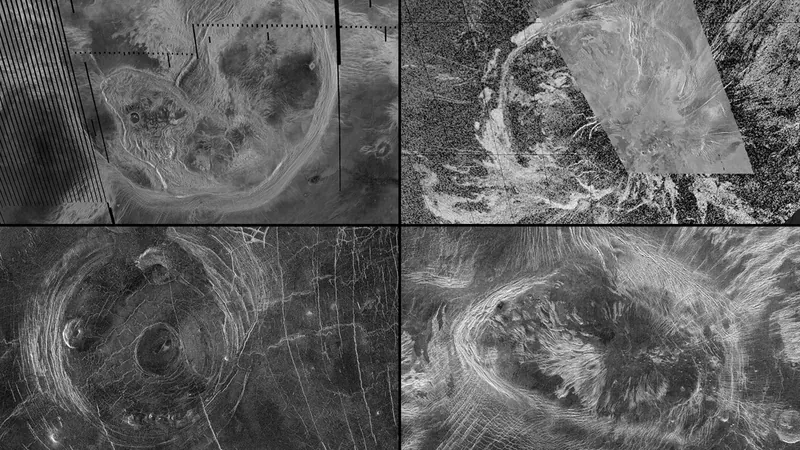
Revealing the Secrets of Venus: Are the Planet’s Surfaces Still Shifting Today?
2025-05-19
Author: Ying
A groundbreaking new study has unearthed overlooked hints of ongoing geological activity on Venus, challenging our long-held views of the planet's surface. The discovery centers on mysterious circular formations known as "coronae," offering fresh insights not only into Venus's dynamic state but also into Earth's ancient geological history.
Unraveling the Mystery of Coronae
Coronae are colossal, oval-shaped structures, stretching from tens to hundreds of miles wide. Researchers believe they develop as hot plumes rise from deep within a planet, impacting the lithosphere, the outer shell of the planet. Picture a slow-motion bubble of molten rock trying to burst through the surface, forcing the crust to warp and fracture.
A Glimpse into Venus: Fantastic Geological Features
These striking geological formations, adorned with rings of fractures, are scattered across Venus's surface, providing a fascinating peek into its internal workings. According to Anna Gülcher, a coauthor and planetary scientist at the University of Bern, the exciting revelation from this study is that the formation of these massive structures is likely influenced by ongoing active geological processes.
Tracing Earth’s Early Landscapes
While coronae no longer exist on Earth, they may have graced our planet during its youth, prior to the establishment of plate tectonics. Study lead Gael Cascioli from NASA's Goddard Space Flight Center stresses how understanding these features on Venus can shed light on Earth's formative years.
The Science Behind the Surprising Findings
Utilizing a state-of-the-art 3D computer model simulating hot material flow inside Venus, the research team examined 75 coronae, finding that 52 exhibited signs of underground activity. The game-changing gravity data from NASA's Magellan spacecraft revealed denser materials pulling more strongly, indicating hidden plumes of hot, less dense material still rising from below.
Tectonic Activity: More Widespread Than Expected?
This significant discovery suggests that tectonic processes may be more common throughout Venus than previously thought. The study proposes multiple forms of tectonic activity influencing the coronae's surface: some regions are experiencing a subduction-like process, while others might be seeing lithospheric dripping, where cooler sections sink into a hotter mantle.
A Planetary Dynamic Parallel
These findings imply that Venus may be geologically active in complex and varied manners, providing valuable insights into possible tectonic activities on planets lacking Earth's familiar plate boundaries. This parallels how Earth functioned in its more tumultuous past.
The Future of Venus Exploration
While this study provides a wealth of information, the researchers relied on older data. Anticipation builds for the upcoming VERITAS mission, which aims to launch in 2031. With higher-resolution gravity maps set to reveal a clearer picture, Suzanne Smrekar, a planetary scientist at JPL, assures that these new insights could completely revolutionize our understanding of Venusian geology and its implications for early Earth.





 Brasil (PT)
Brasil (PT)
 Canada (EN)
Canada (EN)
 Chile (ES)
Chile (ES)
 Česko (CS)
Česko (CS)
 대한민국 (KO)
대한민국 (KO)
 España (ES)
España (ES)
 France (FR)
France (FR)
 Hong Kong (EN)
Hong Kong (EN)
 Italia (IT)
Italia (IT)
 日本 (JA)
日本 (JA)
 Magyarország (HU)
Magyarország (HU)
 Norge (NO)
Norge (NO)
 Polska (PL)
Polska (PL)
 Schweiz (DE)
Schweiz (DE)
 Singapore (EN)
Singapore (EN)
 Sverige (SV)
Sverige (SV)
 Suomi (FI)
Suomi (FI)
 Türkiye (TR)
Türkiye (TR)
 الإمارات العربية المتحدة (AR)
الإمارات العربية المتحدة (AR)